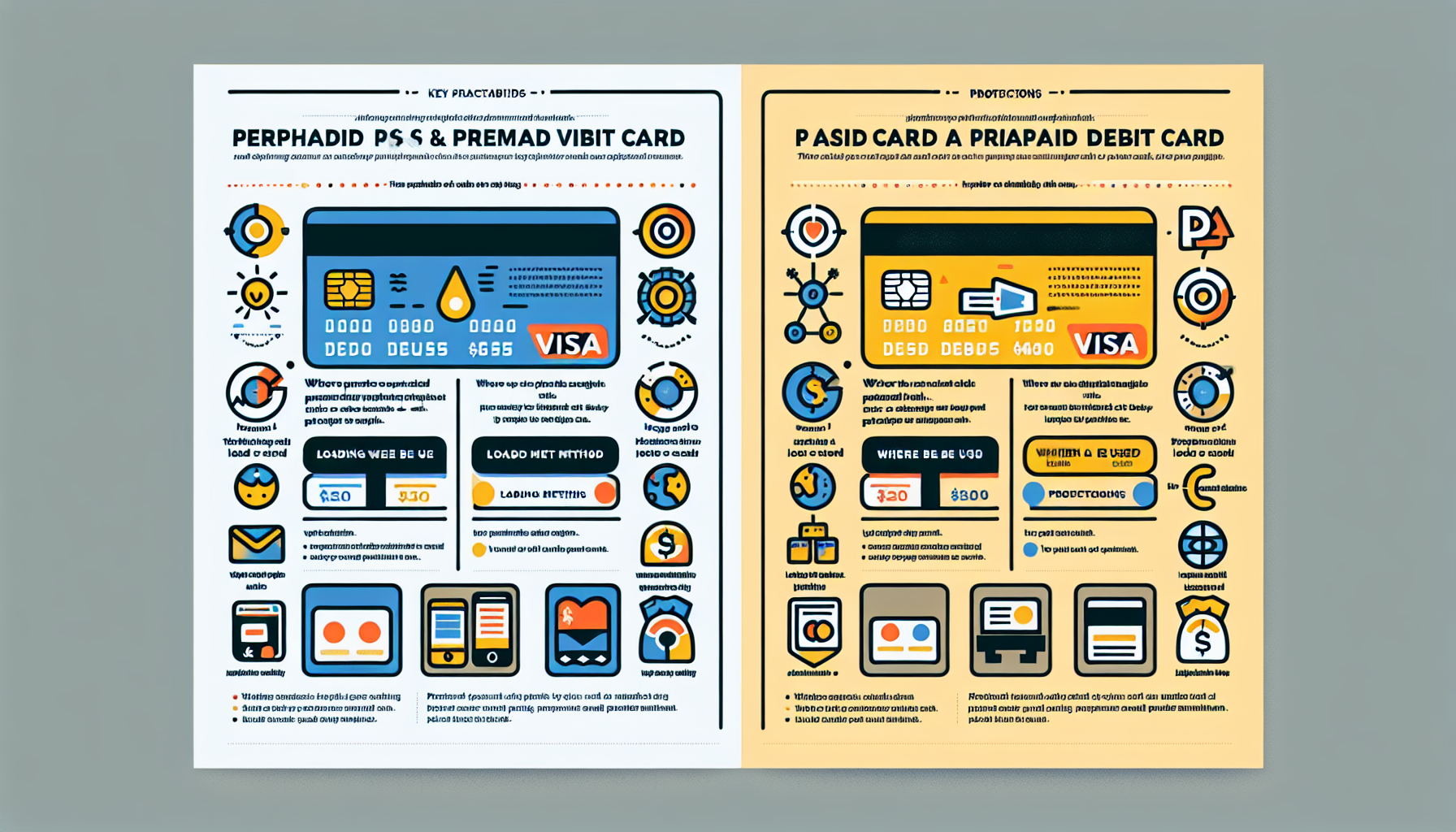In today’s digital age, prepaid cards have become increasingly popular as a convenient and flexible payment option. While prepaid Visa and prepaid debit cards may seem similar at first glance, there are key differences between the two that consumers should be aware of before deciding which option is best for them. Understanding these distinctions can help individuals make informed choices when it comes to managing their finances and making purchases.
Key Differences Between Prepaid Visa and Prepaid Debit Cards
Card Network
One of the main differences between prepaid Visa and prepaid debit cards lies in the card network they are affiliated with. Prepaid Visa cards are issued by banks or financial institutions and are part of the Visa payment network. This means that they can be used at any merchant that accepts Visa cards, both online and in-store. On the other hand, prepaid debit cards are not affiliated with a specific card network and can only be used at merchants that accept the specific card brand (e.g., Mastercard, American Express).
Reload Options
Another important distinction between prepaid Visa and prepaid debit cards is the way in which they can be reloaded with funds. Prepaid Visa cards typically offer more flexibility when it comes to reloading options, allowing users to add funds through direct deposit, bank transfers, cash reloads at participating retailers, and mobile check deposits. Prepaid debit cards, on the other hand, may have more limited reloading options, depending on the card issuer. Some prepaid debit cards may only allow users to reload funds through direct deposit or at designated locations.
Fees and Charges
When it comes to fees and charges, prepaid Visa and prepaid debit cards may have different fee structures that consumers should be aware of. Prepaid Visa cards may come with a variety of fees, including activation fees, monthly maintenance fees, transaction fees, ATM withdrawal fees, and inactivity fees. These fees can add up over time and impact the overall cost of using the card. Prepaid debit cards may have similar fees, but the specific fees and charges can vary depending on the card issuer. It is important for consumers to carefully review the fee schedule for each card and choose the option that offers the most cost-effective solution for their needs.
Which Option is Best for You: Prepaid Visa or Prepaid Debit?
Consider Your Spending Habits
When deciding between a prepaid Visa and a prepaid debit card, it is important to consider your spending habits and how you plan to use the card. If you frequently shop online or travel internationally, a prepaid Visa card may be the better option, as it can be used at any merchant that accepts Visa cards worldwide. However, if you primarily shop at local retailers and do not require the flexibility of using the card internationally, a prepaid debit card may be a more suitable choice.
Evaluate Reload Options
Another factor to consider when choosing between a prepaid Visa and a prepaid debit card is the availability of reload options. If you prefer the convenience of reloading your card online or through mobile check deposits, a prepaid Visa card may be the more convenient option. However, if you are comfortable with reloading your card at designated locations or through direct deposit, a prepaid debit card may be a more practical choice for your needs.
Compare Fees and Charges
Before making a decision, it is essential to compare the fees and charges associated with both prepaid Visa and prepaid debit cards. Look for cards that have transparent fee structures and minimal fees to avoid unnecessary costs. Consider how often you plan to use the card, and factor in any potential fees that may apply to your usage patterns. By choosing a card with reasonable fees and charges, you can maximize the value of your prepaid card and avoid unexpected expenses.
In conclusion, understanding the key differences between prepaid Visa and prepaid debit cards can help consumers make informed decisions when selecting the best payment option for their needs. By considering factors such as card network affiliation, reload options, and fees and charges, individuals can choose a card that aligns with their spending habits and financial goals. Whether you opt for a prepaid Visa or prepaid debit card, both options offer a convenient and secure way to manage your finances and make purchases without the need for a traditional bank account.
